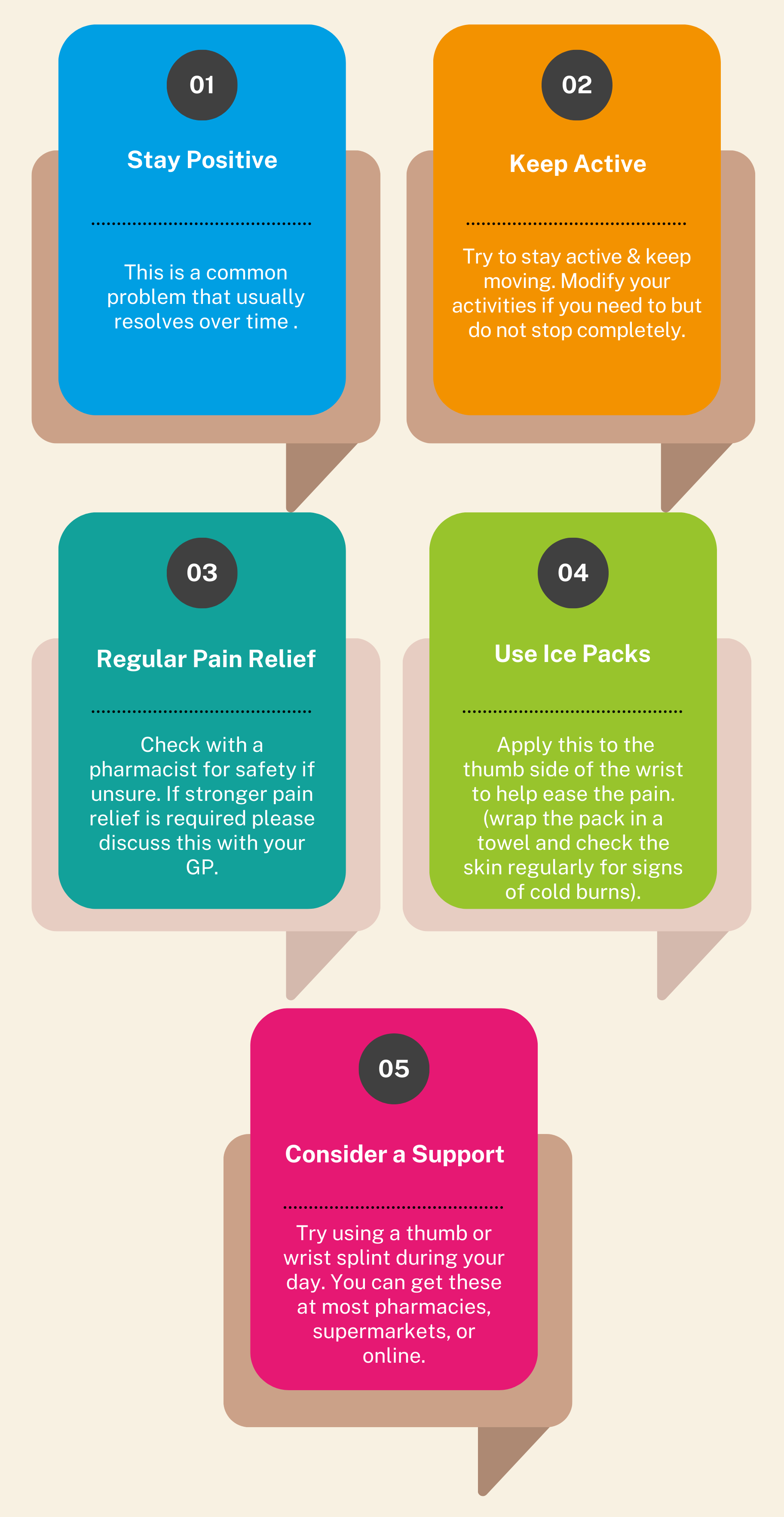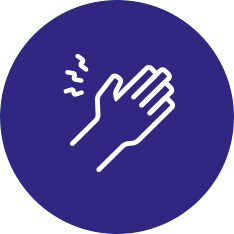De Quervains Tenosynovitis
What is De Quervains Tenosynovitis?
De Quervain’s is a condition where the sheath that covers the tendons on the thumb side of the wrist becomes thickened and painful.
The sheath normally acts as a tunnel for the tendons to hold them in place and allows the tendons to slide up and down when you move your thumb.
When the sheath becomes thickened, the tunnel narrows and can result in inflaming the tendons. This leads to pain when moving the thumb, wrist, and hand.
What are the symptoms?
Typically the symptoms are:
- Pain and stiffness around the thumb side of the wrist
- Pain on certain hand and wrist activities, particularly lifting the thumb, gripping, using scissors
- Reduced movements and strength at the hand and wrist
- Sometimes there is swelling around the thumb side of the wrist
What are the causes?
The exact cause is not always known, but there are many factors that can contribute towards it:
- Sudden increase in load or demand placed on the muscles, such as: a new DIY or craft project, writing an essay, a game on your phone or games console.
- Repetitive activities that continually overload the thumb.
- Inactivity causing deconditioning of the muscles and tendons
- Smoking
- It is more common in women and new mothers
- Age – more common between 30-55 years
For more information to help support your general health and well-being, please click here to access our "Healthy You" page. This includes information on exercise, mental health, smoking and weight management.
How long will it last?
Everyone's pain is different and full recovery can depend on multiple factors, but most people will make a full recovery. Most people will see some improvement following 6-12 weeks of lifestyle changes, advice, and an exercise program. Tendon healing can be a slow process and can take up to 18-24 months to fully resolve in some cases.
What can I do to help myself?

What else can I do?
A gradual increase in load once its more settled can help the tendon structure improve. We have provided some exercises in the links below. Start with the easiest and build up to the more advanced exercises as you feel able to.
De Quervain’s Tenosynovitis - EASY
De Quervain’s Tenosynovitis - MODERATE
De Quervain’s Tenosynovitis - ADVANCED
Do I need an x-ray or a scan?
In most cases, no. A good history and physical examination of your thumb and wrist alone provides enough information to diagnose your problem. Scans and x-rays are not always useful for diagnosing De Quervain's. While a scan or x-ray may provide information it rarely alters the treatment plan.
Imaging findings are very poorly linked with pain and often people with no pain have very similar findings on their scans/x-rays to those that do. X-rays and scans can help for a small number of people in certain situations and will be recommended by a healthcare professional if required.
What about a steroid injection?
A steroid injection may be considered to help control the pain and inflammation in some circumstances. The risks and benefits would be discussed with your Physiotherapist or GP and is not always an appropriate option for all patients.
Symptoms to check
Click the plus sign to see a list of problems that could be a sign you may need to be checked urgently
Get advice from 111 now if:
- the pain is severe and started after an injury or accident, like a fall
- if you have cut yourself and can no longer move your fingers or wrist normally
- you heard a snap, grinding or popping noise at the time of an injury
- you are unable to move or hold things
- your hand or wrist has changed shape or colour
- you have a very high temperature, feel hot and shivery, and have redness or heat around the hand, wrist or fingers – this can be a sign of infection
- you have any severe tingling or loss of sensation in your hand and it wont go away
Immediate medical advice is available by contacting NHS 111


 Wrist & Hand
Wrist & Hand